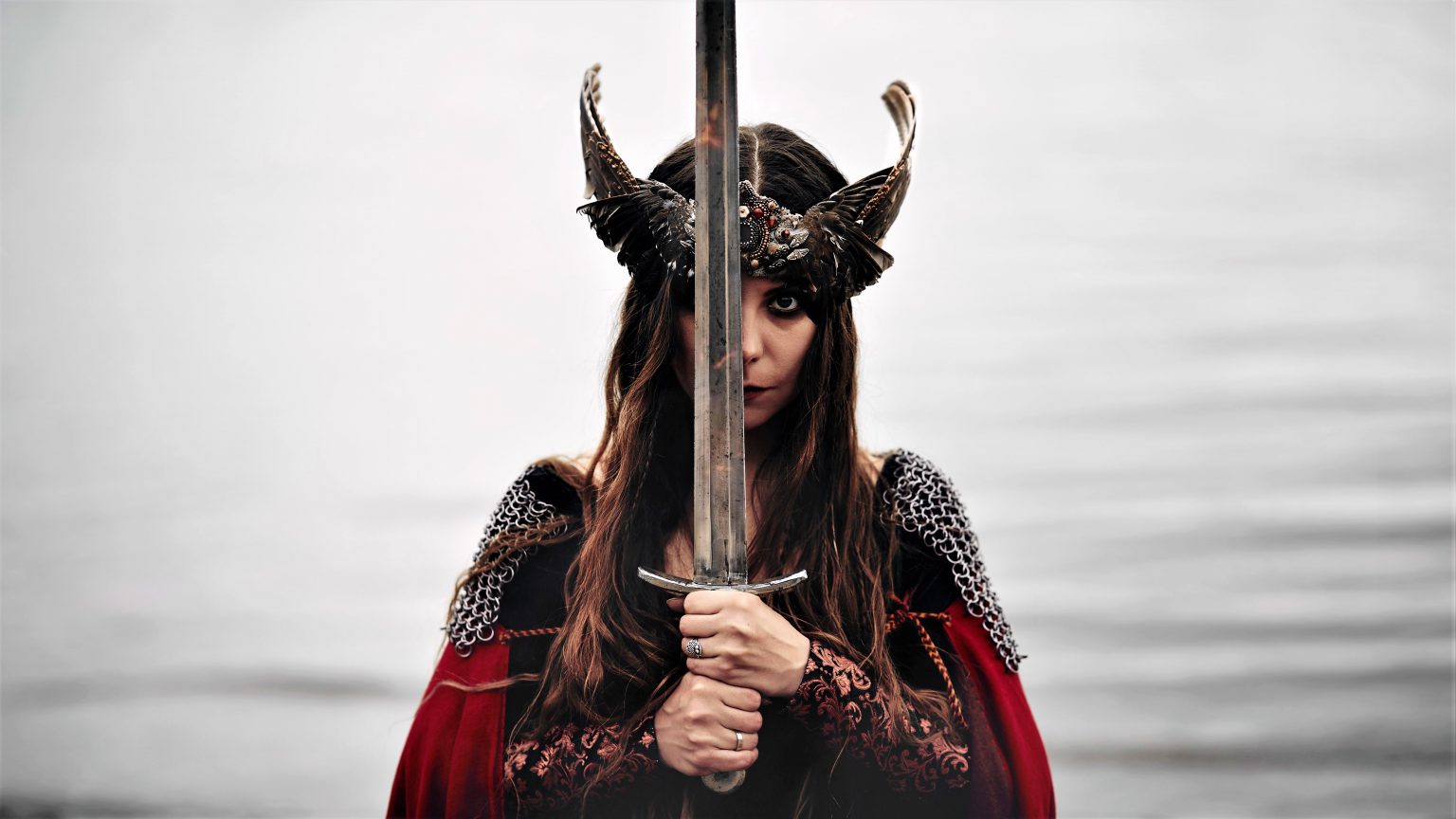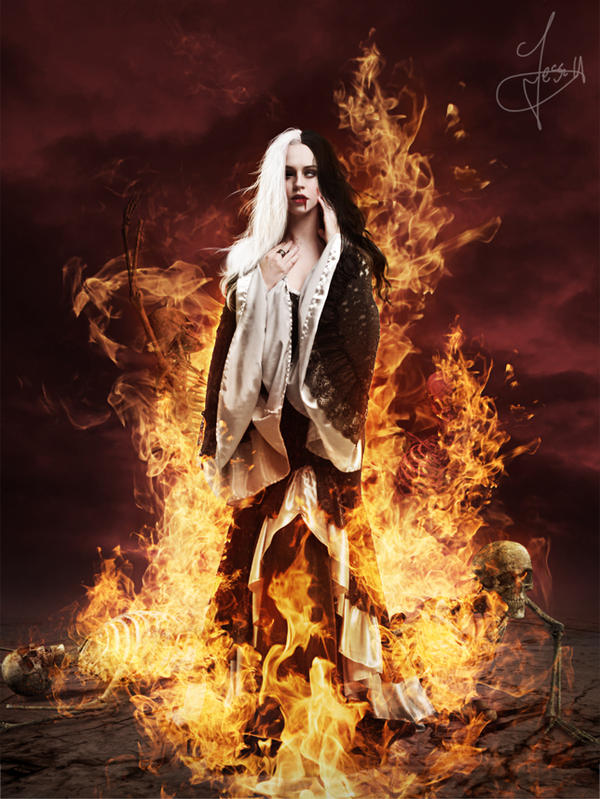
Пин на доске Hel Norse Mythology
Norse Mythology refers to the Scandinavian mythological framework that was upheld during and around the time of the Viking Age (c. 790- c. 1100 CE). Complete with a creation myth that has the first gods slaying a giant and turning his body parts into the world, various realms spread out beneath the World Tree Yggdrasil, and the eventual destruction of the known world in the Ragnarök, the.

Pin von Steven Eighner auf World of Shadows 3 Nordische göttin, Germanische mythologie
Hel (location) "Odin Rides to Hel" (1908) by W. G. Collingwood. Hel ( Old Norse: [ˈhel]) is an afterlife location in Norse mythology and paganism. It is ruled over by a being of the same name, Hel. In late Icelandic sources, varying descriptions of Hel are given and various figures are described as being buried with items that will facilitate.

Hel Goddess of Underworld Hel goddess, Norse goddess, Norse mythology
In Norse mythology, Hela (also called Hel) ruled one of the realms of the dead, known as Helheim or Hel. Helheim was part of Niflheim, a misty, cold world underneath one of the world tree Yggdrasil's branches, writes The Norse Gods. Hela accepted the dishonorable dead in Helheim. Hela, as you might expect of a ruler of the underworld, was known.

ArtStation Hel, Caroline Zakharova
Goddess Hel, a drawing by Johannes Gehrts. The goddess Hel in Norse mythology is associated with death and the underworld. In Norse tradition, she is responsible for receiving the spirits of the deceased and taking them to the underworld, a realm called Helheim. Her role coincides with Osiris' role, who is in charge of the Duat (underworld.

Helheim by sekiq Ymir, Necropolis, Asatru, Outside World, Norse Mythology, Fantasy Inspiration
Zweifarbige Göttin Hel. Hel, in der nordischen Mythologie die Göttin des Totenreichs, ist zur Hälfte tot, zur Hälfte lebendig. Diese Verkörperung extremster Dualität zeigt sich auch in ihrer Hautfarbe. In der nordgermanischen Mythologie, die in vorchristlicher Zeit im skandinavischen Raum verbreitet war, ist die Göttin Hel die.

The Heirs of Loki Part1 Birth of Hel Flo's History Norse goddess, Norse myth, Mythology
Norse, Nordic, or Scandinavian mythology is the body of myths belonging to the North Germanic peoples, stemming from Old Norse religion and continuing after the Christianization of Scandinavia, and into the Nordic folklore of the modern period. The northernmost extension of Germanic mythology and stemming from Proto-Germanic folklore, Norse mythology consists of tales of various deities.

Pin on Hel Norse Mythology
To conclude, Hel occupies a critical position in Norse mythology as the queen of the realm of the deceased, known as Helheim. Born to Loki and Angrboða, she embodies the shadowy and bleak character of her dominion. Hel's appearance, with one half appearing deceased and the other half alive, makes her a profoundly unsettling and compelling deity.

Pin on dnd inspiration
Hel ist der Name der Totengöttin und ihres Reiches. Hel ist die Tochter von Loki und Angrboda. Ihre Geschwister sind der Fenriswolf und die Midgardschlange. Sie lebt im Totenreich Hel, ihr Saal heißt Eljudni. Alle Toten gehen zu Hel, ehe sie aufgeteilt werden: die Ertrunkenen gehören Ran, die Kriegstoten als Einherier Odin und Freya. Alle anderen bleiben bei ihr. Hel wird geschildert als.

Wikinger Götter Die tapferen Herrscher der nordischen Mythologie
Hel ist in der nordischen Mythologie die Herrscherin der gleichnamigen Unterwelt, auch Helheim genannt. Etymologie. In der christlichen Bibel steht das Wort „Hölle" als althochdeutsch Hellia und gotisch Halja als direkte Übersetzung des griechischen Hades. Der altnordische Name.

Hel Goddess Of The Norse Underworld by xJessey on DeviantArt
Hel ist in der nordischen Mythologie die Herrscherin der gleichnamigen Unterwelt, auch Helheim genannt. Etymologie In der christlichen Bibel steht das Wort „Hölle" als ahd. Hellia und got. Halja als direkte Übersetzung des griechischen Hades. Der altnordische Name Hel ist verwandt mit dem deutschen Wort Hölle und führt auf ein urgermanisches *haljō („Hölle, unterirdische Totenwelt

Pin by Jennifer Perry on Art Norse mythology, Hel goddess, Norse
Mike Greenberg, PhD. Of Loki's three monstrous children, many people find Hel the most sympathetic. While her brothers were violent monsters, she was the most human in appearance. While later made more macabre, her only original connection to death was a blue pallor and dour expression. Hel's relatively unthreatening nature is likely why.

Hel, Guillaume Duchemin on ArtStation at in 2020
Hel (Old Norse Hel, "Hidden"[1]) is a giantess and/or goddess who rules over the identically-named Hel, the underworld where many of the dead dwell. Her name's meaning of "Hidden" surely has to do with the underworld and the dead being "hidden" or buried beneath the ground. According to the thirteenth-century Icelandic scholar Snorri Sturluson, Hel. Continue reading Hel.

“hel, goddess of the underworld” julio del rio Norse MythologyVikingsTattoo Goddess of
Hel's Banishment: Echoes in Mythology. Hel's descent into the underworld and her subsequent rule over it is a narrative that reverberates across various mythologies. This journey of gods or divine entities, from celestial realms to the shadows of the underworld, is an archetypal tale that illuminates shared human fears, hopes, and.

Hel Déesse Nordique du Royaume des Morts MENVIKING
Bild: patrimonio designs ltd / Shutterstock.com Bei Hel handelt es sich um die nordische Totengöttin. Hel war die Tochter von Loki. In der nordisch-germanischen Mythologie verkörperte Hel die Totengöttin. Sie trug auch die Bezeichnungen Hela oder Hellia. Der Name Hel stammt aus dem Altnordischen und war verwandt mit

phrrmp Norse tattoo, Mythology tattoos, Norse mythology tattoo
On the whole, the realm of Helheim in Norse mythology embodies the co-existence of fear, respect, and acceptance of the inevitability of death. It offers a glimpse into a well-structured afterlife that was considered an integral part of the Norse belief system. Despite its depiction as a somber and dark realm, the existence of Helheim provided.

Hel is NOT the Norse Goddess of Death Norse Mythology
Helheim, auch Hel genannt, altnordisch Helheimr, ist das Reich der Totengöttin Hel. Vermutlich ist sie Namensgeberin für das englische Wort. Paul Herrmann: Nordische Mythologie. gekürzte Neuauflage Auflage. Aufbau-Verlag, Berlin 1993, ISBN 3-7466-8000-X, S..